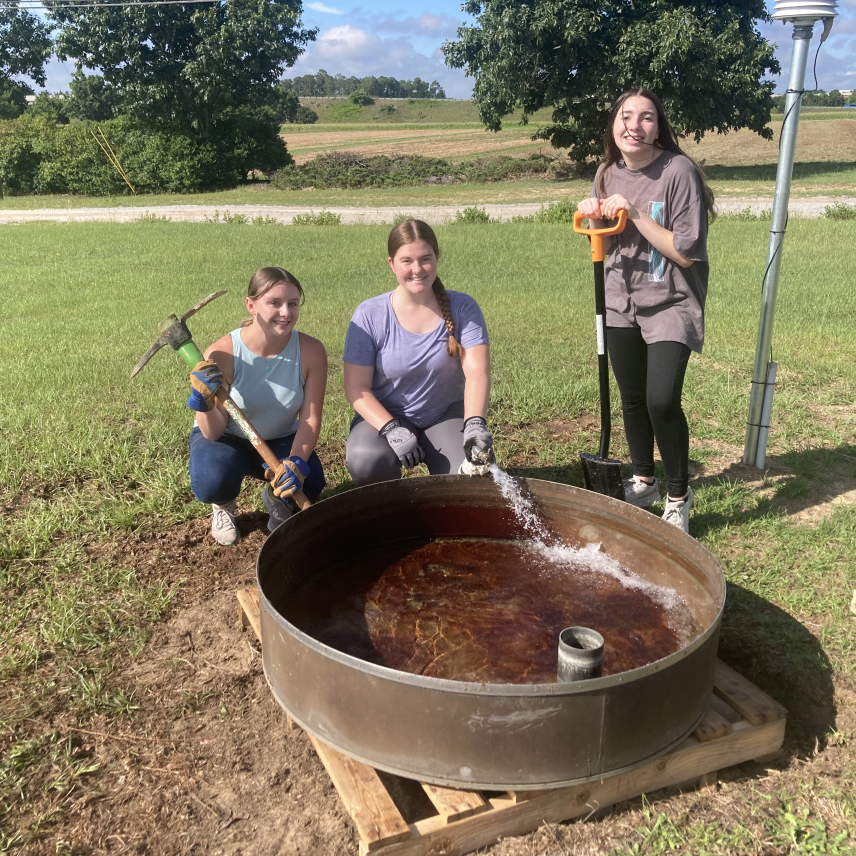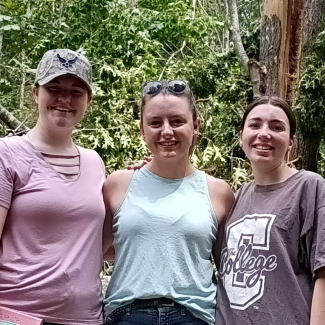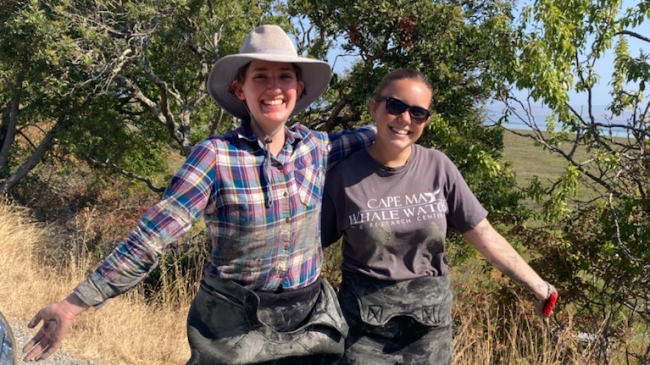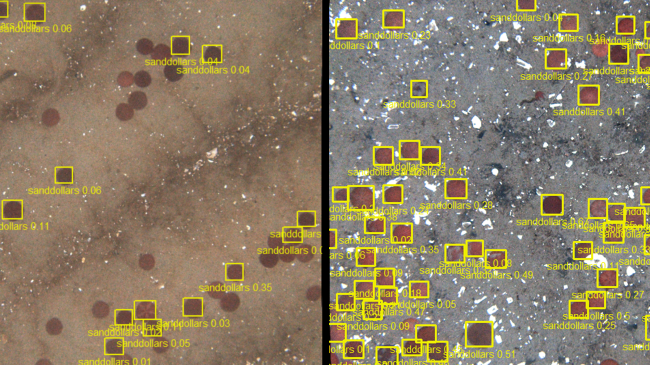Gabby Brown learned about National Weather Service operations both in the office and out in the field during her summer internship with the Weather Forecast Office in Columbia, South Carolina.
Hello! I am Gabrielle (Gabby) Brown, a 2021 Hollings scholar. This past summer I interned at the National Weather Service (NWS) in Columbia, South Carolina. My project investigated if lightning data from the Geostationary Lightning Mapper can help us issue tornado warnings with more lead time, which is the time between when a warning is issued and the warned event occurs. The lightning data could allow forecasters to more quickly identify which cells within tropical systems, such as hurricanes, tropical storms, and more, have the likelihood of producing tornadoes. During my internship, I got to learn about National Weather Service operations both in the office and out in the field.

2021 Hollings scholar Gabby Brown (center) surveys storm damage with two volunteers, Natalie Jones (left) and Abby Grulick (right), during her internship at the Weather Forecast Office in Columbia, South Carolina. (Image credit: Douglas Anderson)
During my internship, I assisted, shadowed, and participated in aviation, fire weather, and long- and near-term forecasts. Part of my work was assisting with storm warning verification, which is used to investigate if damage occurred during storm events. This later helps to improve future weather warnings. I verified warnings by obtaining storm reports through social media monitoring and calling local businesses, storm spotters, 911 dispatch centers, and various state departments. I also learned about how NWS uses social media to share forecasts, educate the public, and alert and verify warnings, statements, and watches.
I got outside of the office during my internship, too. I took trips to help inspect, fix, and install equipment for Cooperative Observer Program (COOP) stations. Each station is equipped with instruments that volunteers use to measure and report meteorological and hydrological data, such as temperature, precipitation, evaporation, and soil temperature. Outside of COOP, I toured other equipment used by the NWS, including the radar and automated surface observing systems near the office.

I also participated in storm surveys, which are trips that NWS survey teams take to investigate storm damage. These trips are used to reconstruct a storm event and gather data on the location, significance, and overall extent of the damage to estimate both the type of event that occurred and the magnitude of it.

One of the highlights of my internship was being able to work with and learn from my mentors, the staff, and other interns at the National Weather Service Columbia office. The office I worked at even hosted workshops about creating resumes and applying to positions at the National Weather Service. Hollings allowed me to network, develop new skills, and learn about different jobs in the field of atmospheric sciences.
I am very appreciative and thankful for this incredible opportunity. You should definitely apply for the Hollings Scholarship Program if you are interested in gaining an experience you will never forget! I hope to take the skills I developed during the Hollings internship to graduate school and to my future career wherever I end up!

Gabrielle Brown (pictured here in the center) is an atmospheric science major at Northern Vermont University. She hopes to attend graduate school following graduation.



